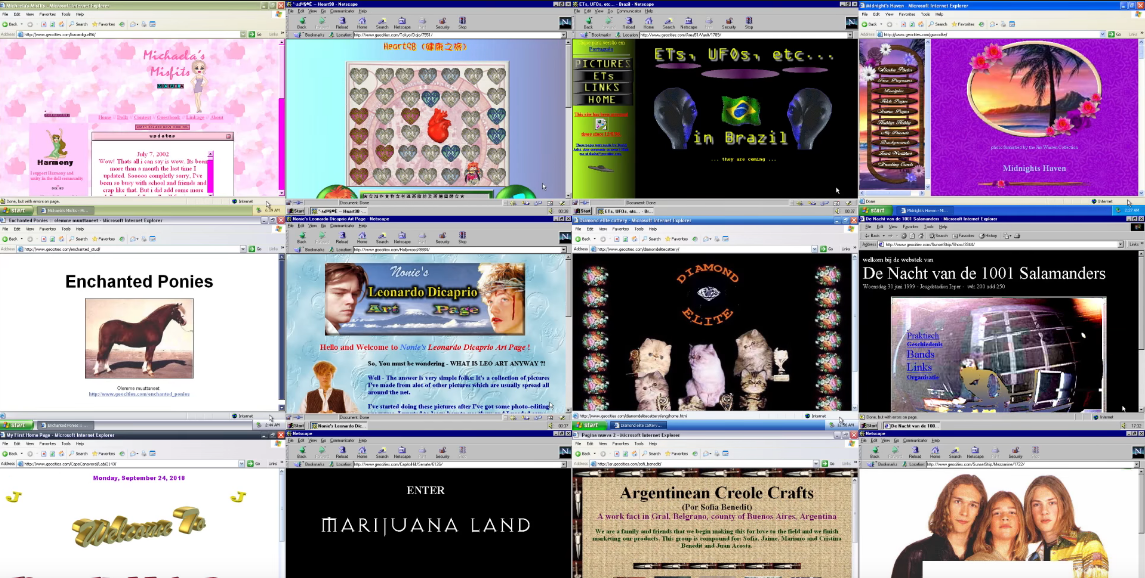Pages vs Profiles
Though amateur and professional artists had been experimenting with the Internet in its earliest days, it was in the mid-90s, after the introduction of the World Wide Web that the Internet saw a renaissance of Digital Folklore.
Digital Folklore encompasses the customs, traditions and elements of visual, textual and audio culture that emerged from users' engagement with personal computer applications during the last decade of the 20th and the first decade of the 21st century
Olia Lialina and Dragan Espenschied (Digital Folklore)
At the same time that (the comparatively small group of) net.artists were creating their iconic works of Internet art, the rest of the web was also being (predominantly) created by amateurs known as "netizens": the non-professional, curious and creative users of the early web. Though they "made fun" of these "amateurs" at the time, today net.artists Olia Lialina and Dragan Espenschied find immense value in this early web and work to preserve it. Watch this video at the top of this page by Quartz where Lialina and Espenschied discuss their motivation behind this work, and then read the first 35 pages of their book Digital Folklore. While they clearly find the (now retro) aesthetic interesting, their investment in this era of the Internet is about much more. Consider why they think it's important to preserve these early web sites? What do they feel has been lost in our present era of Squarespace and Instagram?
The image above (left) is a screen shot from a collection of early web pages on GeoCities, which would range from personal home pages, to fan art to hobby sites. GeoCities, which was launched in 1994, wasn't the only platform of its kind, but its arguably the most influential. In 1999 it was purchased by Yahoo! and then 10 years later the company announced that it would be shutting down the platform. A group of Internet archvists known as the Archive Team downloaded as much of the web pages as they could and created a 1TB (terabyte) torrent which functions as a distributed archive, the last remains of an era long since past.
This archive gave birth to loads of archival and artistic projects like the research blog One Terabyte of Kilobyte Age: Digging through the Geocities Torrent by Olia Lialina and Dragan Espenschied (which lead to the Digital Folklore book), The Geocities Gallery by restorativland, GifCities a GeoCities Animated GIF search engine by the Internet Archive and Cameron's World (video above, right) a "love letter to the Internet of old" by Cameron Askin.
Neocities is by some definitions a tool, but it's also, and maybe formost, a community (...) Neocities is all about brining back the hand built, under construction creative independence of the early Web.
Everest Pipkin
The spirit of GeoCities lives on today through projects like these, but in some sense the platform itself is survived by Neocities a commercial web hosting platform for creating home pages very much in the style of these early sites. The video below, by Internet artist Everest Pipkin is a quick introduction to the platform.
Examples
- type styles (<a>, <blockquote>, <cite>) (sketch)
- single column page conventions (sketch)
- absolute positioning (px) (sketch)
- absolute positioning (%) (sketch)
- Perpetual Beta (project)
